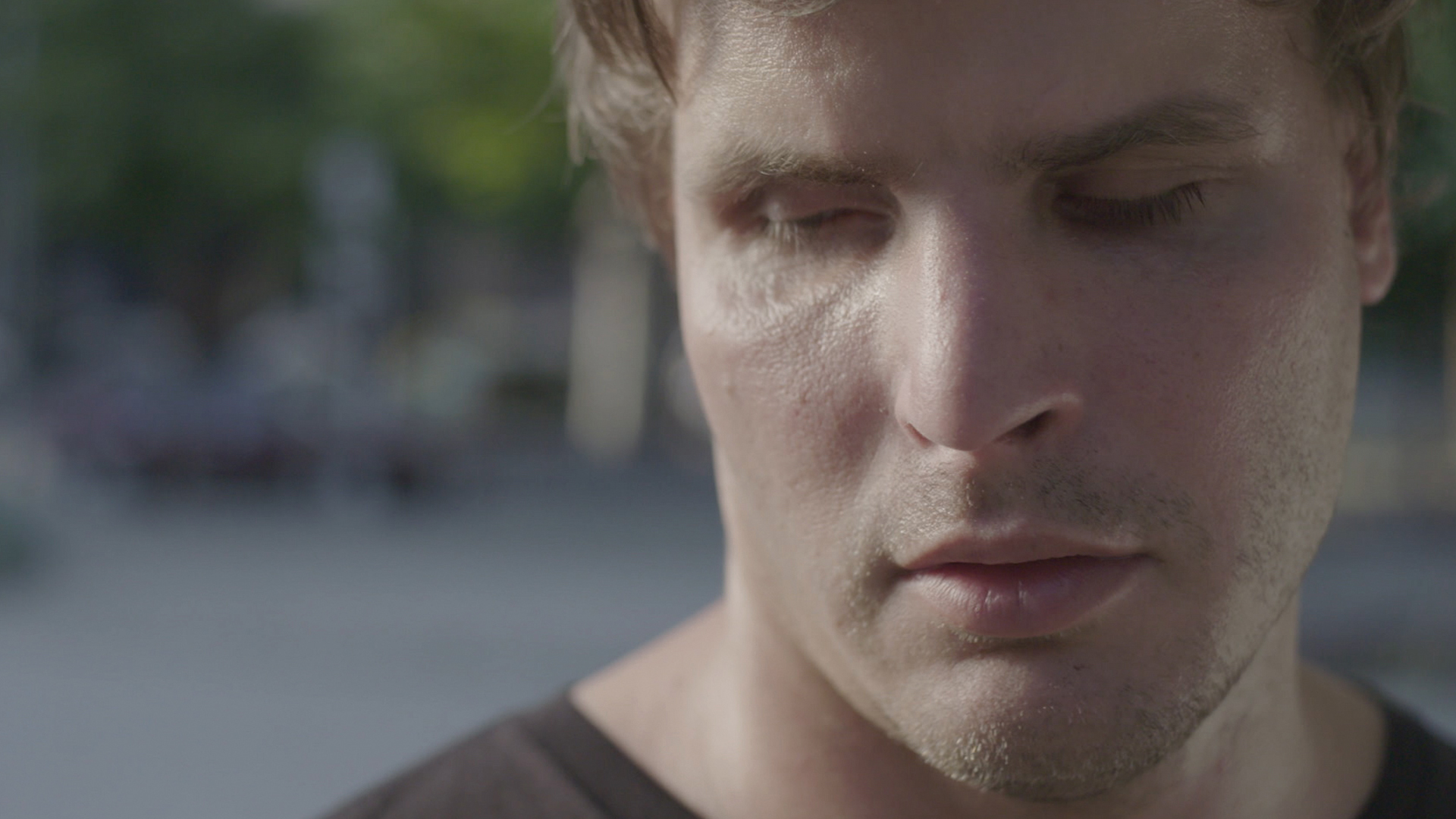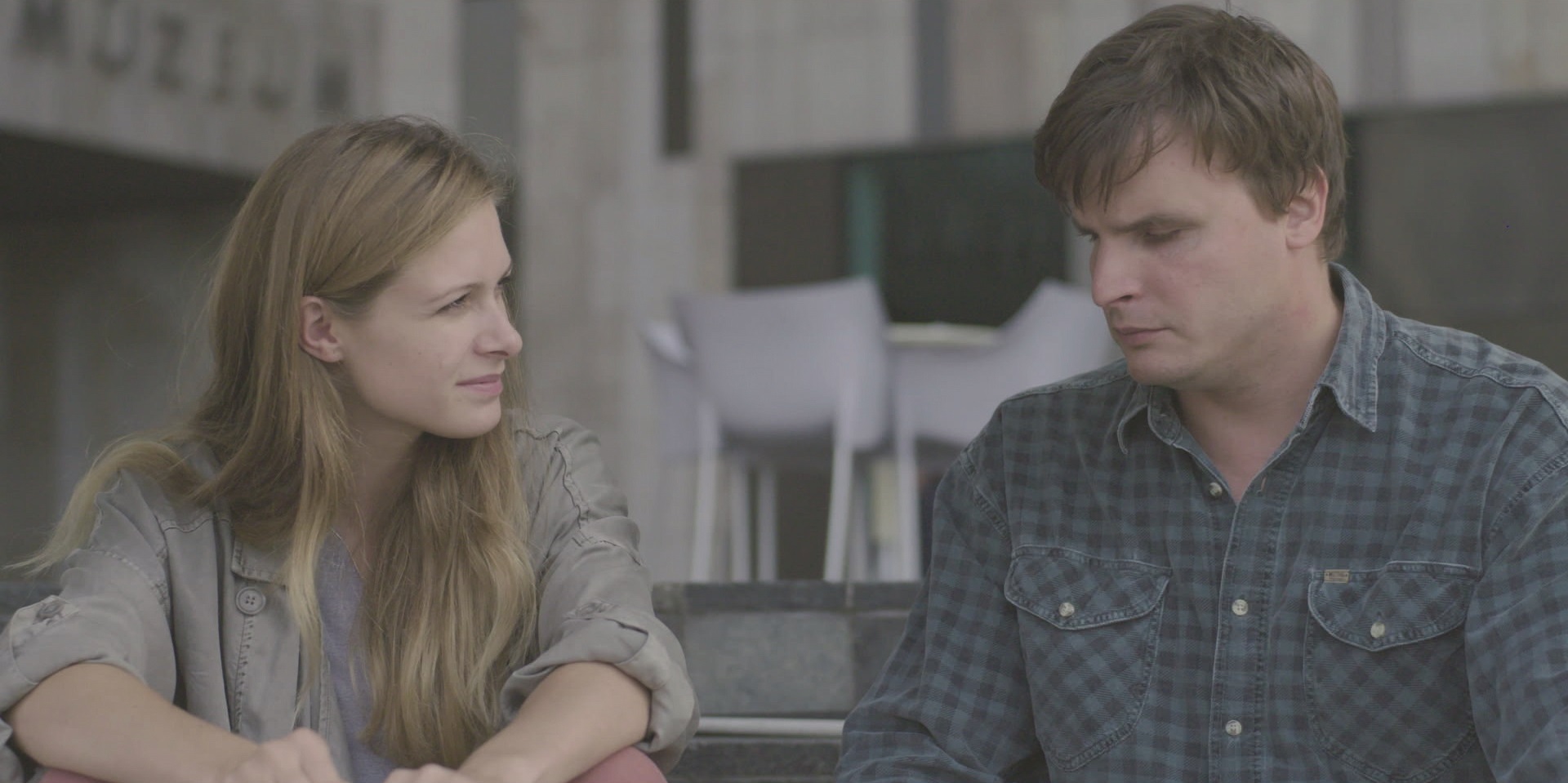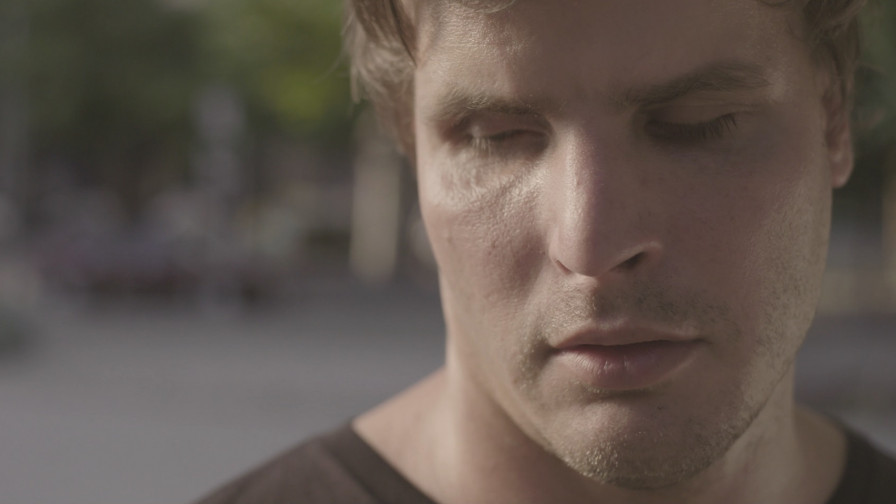Capturing Inner Emotions in The Dark
Where did the idea of ‘Invisibly’ come from?
It came from a personal experience, a strange situation that happened years ago when I went to the Invisible Exhibition in Budapest with an ex-girlfriend. The exhibition is entirely in the dark, as the whole idea is to offer an experience of the world from a blind person’s point of view. I really enjoyed it, but on the way home my girlfriend told me she had had quite a different experience. I don’t want to spoil it, as what happened is in the film, but it came back to me years later. It got me thinking, and slowly turned into a story. The original focus was on the couple and how they dealt with the situation that brought pre-existing conflicts in the relationship to the surface. When I met Tamás Barkó, who later became the lead actor, I realised that a different take on the story would be much more interesting.
How did you meet Barkó?
I was looking for a blind actor for this first version. When I met him, we sat down to talk and the concept of relationships came up. He told me about the constant uncertainty about what the other is looking for: is it just your blindness that is exotic or is there genuine affection? It is often hard to distinguish and can lead to a lot of disappointment. The limits between flirting and being nice are not obvious anyway. Until something concrete happens, like a kiss, for example, people can interpret things the way they want.
Tamás’s personality really moved me. He is very sensitive: impressions like texture, smell or even a sentence can stay with him for a long time. He thinks about them and they come back weeks or months later. This has nothing to do with him being blind, he just tends to get deeply involved, emotionally, in things and situations. It is simply part of his personality.

Tamás Barkó in Invisibly
What was the biggest challenge when working with Tamás as an actor for the first time?
We did a lot of preparation from April to September by meeting each other more and more until shooting began. In the beginning there was no finished script, so we just talked, improvised and practiced. I often recorded these situations so Tamás could get used to the camera, to my presence and to receiving instructions without losing focus in a scene. Learning the lines was different too. First I emailed Tamás the script, which he memorised by listening to his computer read it out loud. This did not work so well, though, as the intonation of the voice-over affected the way he remembered his lines. So I ended up reading them to him myself. It turned out to be a good idea, because I got to spend more time with him, during which I also watched him do everyday things like make tea or mop the floor. These are really simple things, but I noticed gestures that were really his own. We later built on these in the film.
In the visuals, did you want to capture the way Tamás senses the world?
We talked a lot about this with the cinematographer, Zoli Dévényi. We decided that it would be impossible and we didn’t want the film to focus on how the blind sense the world anyway. So we chose to limit the number of these scenes and came up with a visual solution that doesn’t try to be absolutely accurate, but rather serves the global purpose of the film on an emotional level. For me these moments are not just moments of perception, but are instead expressions of the character’s inner emotional state or the projections of a sort of inner attention.
I asked Tomi a lot at the beginning too so that he could explain his experience of certain things to me. But language is made for those with sight and society does not encourage the blind to be conscious about their own inner experience of the world. Let me give you an example to be more clear. We played a game once while preparing for the shoot, where we had to imagine something. Tomi remembered that at school they had been asked to imagine they were kings; so we did the same. I asked, “So why is it good to be a king?” He said that you sit on a high throne and can look down at things from above. I replied, “Ok, I know how that feels, but I don’t understand what it might mean for you”. It turned out that, blind at birth, he learned these expressions that don’t mean much to him at all. So we ended up sitting in different places. It took some time to get to a point where sitting up high feels better because space feels different. When we sat on the ground with our backs to a tree Tomi felt the push from behind as well as from underneath, as if space was falling down on him, whereas sitting up on the top of a bench with our feet on the seat felt more spacious and more free.
You start the film with minutes of darkness, when all the audience can hear are people speaking in the background at the exhibition.
In the first scene we wanted to get the audience attuned to the film, like every director always does. But it’s not actually dark because it is a subjective or POV shot that tries to show how blind people experience the world. Or some artistic bravour. It’s the objective reality of the scene, in which there is no light. The scene wants to introduce the basic situation, focusing on what happens to blind people in the dark.
Which directors do you admire?
I really like Joachim Trier, especially his first two features. I also like Ruben Östlund and films of the Romanian New Wave. If I had to choose a main figure in film history it would be Andrei Tarkovsky. Among Hungarian auteurs, Szabolcs Hajdu’s work and approach to filmmaking is really inspiring, and I loved Károly Makk’s ‘Love’ and Zoltán Huszárik’s ‘Sindbad’. But I have a lot to catch up on when it comes to classics, as there is still so much I haven’t seen.
What’s your next project?
I’m currently working on my graduation short film. After Cannes I will focus entirely on that, but right now there’s still a lot of work to do with ‘Invisibly’. Usually when you make a short film, you screen it once or twice for your friends and family, it travels to a few festivals, it’s watched by 500 to 1 000 people and that’s it, even though you have worked on it for 1.5 years. Getting into Cannes changes things: films get more attention and give you more work, but that’s the good kind of tired.

Invisibly by Áron Szentpéteri
Hungarians in the Cinéfondation
Áron Szentpéteri’s ‘Invisibly’ getting selected to the Cinéfondation is a great honour, but there have been some other young directors who have also been given the chance to premiere their student films in this grand section. The director who introduced Hungarians to the Cinéfondation for the first time was Kornél Mundruczó (a regular here in Cannes and whose feature ‘Jupiter’s Moon’ is in competition this year too) in 2004, whose graduation short film ‘Little Apocrypha No.2’ was selected. Two years later he was followed by Ágnes Kocsis, whose short film ‘The Virus’ shared third prize. The next young director to be selected was Bálint Szimler, in 2010, who premiered his short entitled ‘Here I Am’. György Mór Kárpáti’s ‘Provincia’ was selected and screened in Cinéfondation in 2014, and last year saw the premiere of the first Hungarian animated short in the selection called ‘The Noise of Licking’ by Nadja Andrasev, which also won shared third prize.
Janka Pozsonyi
